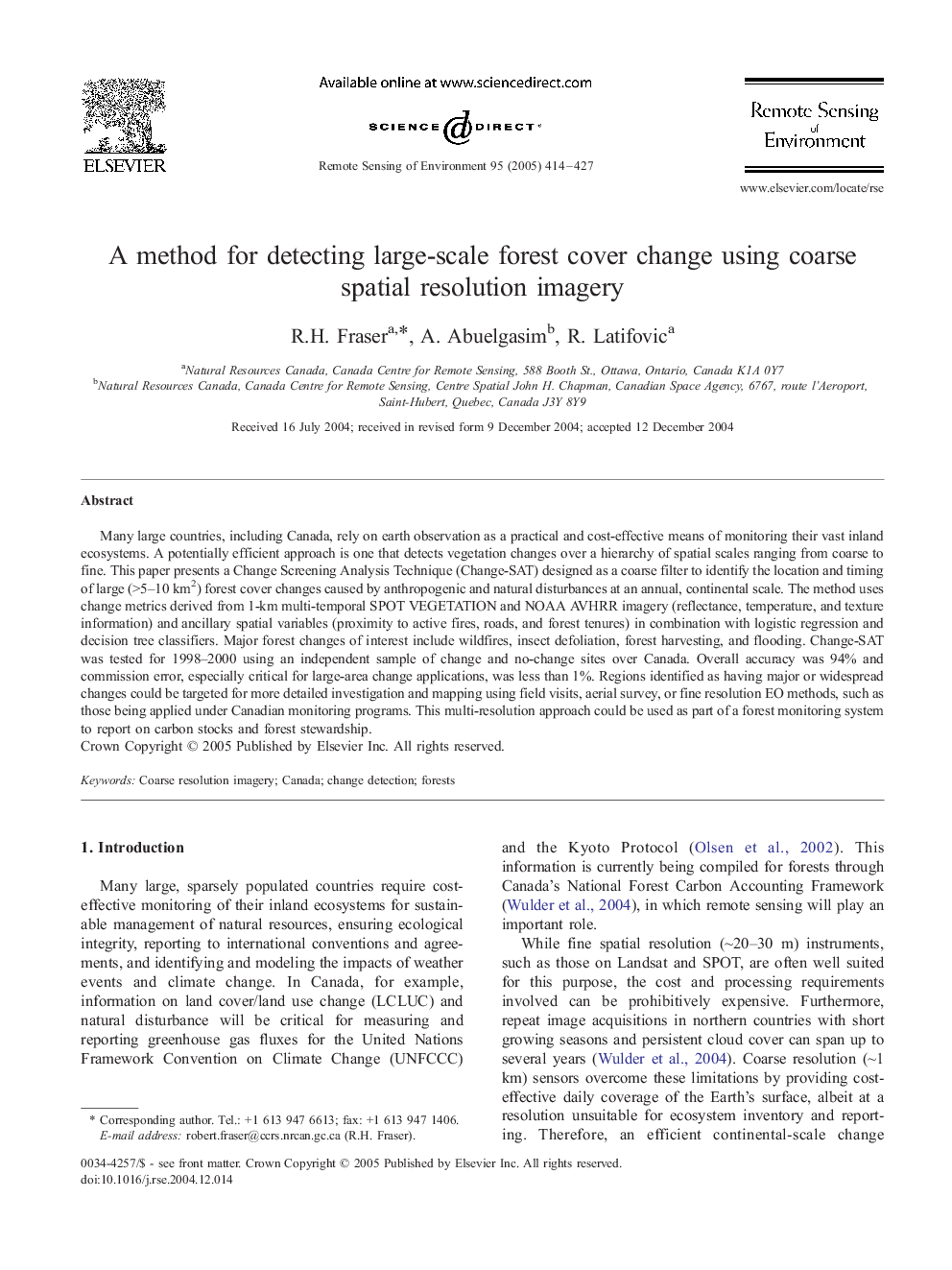| Article ID | Journal | Published Year | Pages | File Type |
|---|---|---|---|---|
| 10114249 | Remote Sensing of Environment | 2005 | 14 Pages |
Abstract
Many large countries, including Canada, rely on earth observation as a practical and cost-effective means of monitoring their vast inland ecosystems. A potentially efficient approach is one that detects vegetation changes over a hierarchy of spatial scales ranging from coarse to fine. This paper presents a Change Screening Analysis Technique (Change-SAT) designed as a coarse filter to identify the location and timing of large (>5-10 km2) forest cover changes caused by anthropogenic and natural disturbances at an annual, continental scale. The method uses change metrics derived from 1-km multi-temporal SPOT VEGETATION and NOAA AVHRR imagery (reflectance, temperature, and texture information) and ancillary spatial variables (proximity to active fires, roads, and forest tenures) in combination with logistic regression and decision tree classifiers. Major forest changes of interest include wildfires, insect defoliation, forest harvesting, and flooding. Change-SAT was tested for 1998-2000 using an independent sample of change and no-change sites over Canada. Overall accuracy was 94% and commission error, especially critical for large-area change applications, was less than 1%. Regions identified as having major or widespread changes could be targeted for more detailed investigation and mapping using field visits, aerial survey, or fine resolution EO methods, such as those being applied under Canadian monitoring programs. This multi-resolution approach could be used as part of a forest monitoring system to report on carbon stocks and forest stewardship.
Keywords
Related Topics
Physical Sciences and Engineering
Earth and Planetary Sciences
Computers in Earth Sciences
Authors
R.H. Fraser, A. Abuelgasim, R. Latifovic,
